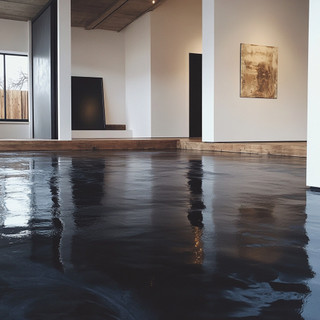Why Is My Laminate Flooring Lifting?
Posted by Caitlin Davis on 29th Jan 2024
Laminate Flooring is an excellent flooring option. It’s durable, cost-effective and looks fantastic. Unfortunately, if it’s not professionally installed, laminate flooring becomes tired very quickly. One of the most common problems with laminate flooring is that the flooring planks can lift. If you have a laminate floor that is lifting, read this blog to understand possible causes and solutions to your problem.
What are expansion joints?
Expansion joints are also known as movement joints or dilation joints, and these joints allow the laminate floor to flex and move as the temperature and humidity change within a room. The first thing to look at is whether or not your laminate flooring has been laid with the correct expansion joints. On all sides of the laminate flooring, there should be around 10 mm of expansion - especially in areas between rooms or around pipes and heating.
What happens when your subfloor is damp?
If you have reviewed the expansion joints - and they are all in good order, the next thing to examine and check is the subfloor. Laminate flooring is prone to water damage - and when using a concrete subfloor, moisture levels need to be below 2.5%. This can be measured using a moisture metre. If the moisture content of the floor is higher, this will be the likely cause of lifting laminate flooring. An underlay with a damp-proof membrane is recommended, protecting the laminate flooring from moisture damage. Two damp proof membranes we recommend are F Ball Stopgap F77 and Instarmac Ultrafloor DPM IT Rapid Cure.
Does it matter if my subfloor is uneven?
If you can feel the laminate flooring bounce as you walk over it and notice the flooring lifting - it’s a clear sign that you have an uneven subfloor. The tolerance for laminate flooring is 2mm unevenness over a metre in any direction. If the unevenness of the floor is more significant than this, you can expect lifting and bouncy laminate flooring - which can be sorted by using a levelling compound on the concrete floor.
Contact us.
If questions about flooring is something you want to discuss further or you just want some advice, contact the team at sales@floormart.co.uk and we will be happy to guide you in the right direction. We always recommend speaking to the manufacturer & checking product data sheets before purchasing.










